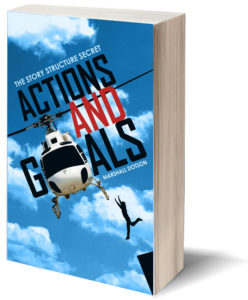Here’s part one of my four part video series explaining Six Act Structure. This video provides an introduction to the Six Act paradigm and how it works. Enjoy and be on the lookout for part two dropping in February!
MD
To learn more about Six Act story structure, purchase your copy of “Actions and Goals: The Story Structure Secret” today!

Hi, Mr Dotson.
I’m an italian professional screenwriter and I really love your work about structure. I bought your book one year ago, and I think it is a masterpiece.
I’ve only one question: don’t you think that the second act (learning the rules…) is more in line with the traditional beginning of the second act in the classic three act structure?
The dilemma, the new role of your first act, and we are at page 25th, in the classic structure, where your act Two begins. Or not?
Thank you,
Ale from Italy
Thanks for reaching out, Ale and sorry for the delayed response.
I’m honestly surprised no one else has asked this before since the answer is a resounding yes and no! Since there’s no universal consensus, it’s dependent on how the traditional Act One break is arbitrarily defined. If you base it off of say, Blake Snyder’s save the cat paradigm, then I believe the “break into act two” falls after the Dilemma. I based my correlation between the Three Dramatic Phases and the Six Acts off of the act breaks in Michael Hauge’s 3 Act/Six stage paradigm, wherein the first traditional act doesn’t end at the Dilemma (what Hague calls the Opportunity), but when the character is placed on the primary storyline at the Commitment (which he calls the Change of Plans). The character discovering the New Situation and how it works is still “setting up” the story, but the first traditional act ends when he decides how to react to the new situation and moves into the confrontation phase.
Hope that helps. Thanks for your support and kind words!
MD